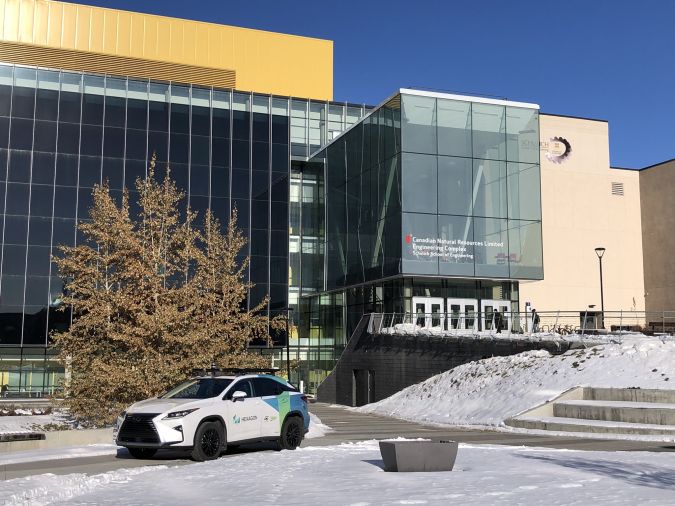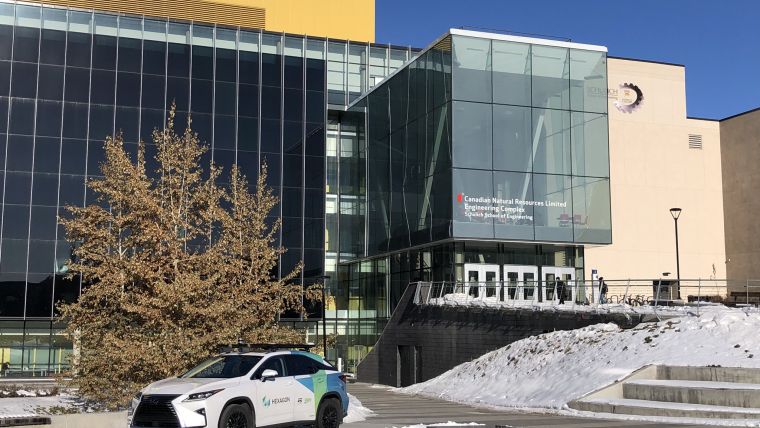Why and how does geomatics engineering education need to change?
The impact of the digital transformation
To accomplish their mission of educating a new generation of geomatics engineers, universities need to enhance their current programmes to expose students to emerging technologies. Only then will the industry be able to keep pace with the growth of – and need for – geospatial information in today’s interconnected world.
Graduates of geomatics engineering programmes have traditionally been employed in a diverse range of careers, including land and engineering surveying, mapping, airborne and mobile mapping, positioning and navigation for the building sector, defence, mining, oil and gas, remote sensing for environmental management, public utilities and government. Nonetheless, the unprecedented global growth of – and need for – geospatial information and technologies in our interconnected world has recently provided geomatics engineers with many new challenges and opportunities. Engineering colleges and universities need to rise to these challenges and accomplish their mission of educating a new generation of geomatics engineers by exposing students to emerging fields in the geospatial industry, such as the Internet of Things (IoT), uncrewed aerial vehicles (UAVs or ‘drones’), autonomous robots, intelligent 3D imaging, spaceborne Earth observation systems, the geospatial web and big data analytics. This requires the enhancement of the current geomatics engineering programmes with new courses and pathways for study that can: (a) provide students with the necessary knowledge to excel as working professionals or as researchers, and (b) increase diversity and inclusivity among engineering students by broadening the number of available career pathways and thus attracting students from equity-deserving groups.
The geomatics engineering discipline has experienced rapid evolution in various areas, such as positioning systems, imaging systems and geospatial information systems, over the past four decades or more. University curricula have kept up with this evolution by implementing minor and major changes in the content of existing courses, or by introducing some new courses to integrate any mature theoretical and practical knowledge from these areas into a continuous process.
Pressure for change
Today, it is the widespread digital transformation that is having a profound impact on all aspects of geomatics engineering technologies and is putting unprecedented pressure for radical changes on university curricula. With billions of devices connected to the IoT and the rising number of Earth observation systems mounted on satellites, aircraft and UAVs, executives and decision-makers have access to voluminous geospatial data. One growing challenge for geomatics engineers is to build ‘location intelligence’ by processing, analysing and visualizing massive volumes of geospatial data to empower holistic planning, prediction and problem-solving. Now more than ever, the geospatial industry is seeking geomatics professionals with strong software engineering skills. To address this high demand, geomatics engineering curricula should be enhanced with software engineering attributes.
Software engineering courses
At the University of Calgary, Canada, we recently introduced an optional minor programme in software engineering to give students on our BSc in Geomatics Engineering programme distinct software engineering knowledge and associated skills. A total of ten software engineering courses were added to the minor programme with the goal of making geomatics engineering graduates more well-rounded and poised for success.
To ensure a solid programme that would offer geomatics engineering students a thorough understanding of software engineering as a discipline, the curriculum of the minor programme was developed in collaboration with the faculty members in the University of Calgary’s Department of Electrical and Software Engineering. Additionally, to determine the most in-demand skills and curriculum content for both employers and students, the curriculum was developed in consultation with leaders in geomatics and software engineering industries across Canada and internationally.

Theory and practice
The minor programme covers subjects like software design and development, data science, artificial intelligence (AI), machine learning (ML) and IoT. In addition to the solid theoretical and practical background, this programme includes numerous hands-on and experiential learning opportunities (e.g. open-house events and industry exposure as part of a co-op term or internship) to help students attain a wide array of technical skills in geospatial programming, intelligent data management and analytics, web development, system validation and testing. In their final year of study, students take a year-long capstone design course, where they work with their peers in the minor programme to complete industry-relevant design projects in software engineering with specific applications in geomatics engineering. The new minor is intended to rescale our undergraduate programme curriculum, open up new employment opportunities for our students and enhance the multidisciplinary collaboration within the Schulich School of Engineering at the University of Calgary.
Preparing tomorrow’s leaders
University curricula should align with the digital transformation to prepare tomorrow’s leaders in the geomatics engineering industry. As geomatics engineering and related industries are growing to become a significant economic engine regionally, nationally and internationally, there is a lot to be gained from embedding solid software engineering attributes and learning outcomes in geomatics engineering curricula. Firstly, this will facilitate geomatics engineering graduates to pursue more diverse career pathways. Secondly, it will increase awareness and interest in the natural intersections between geomatics engineering and software engineering among high-school graduates and raise enrolment levels in geomatics engineering programmes. Last but not least, it will improve diversity and inclusivity, especially in terms of the gender balance in geomatics engineering programmes.


Value staying current with geomatics?
Stay on the map with our expertly curated newsletters.
We provide educational insights, industry updates, and inspiring stories to help you learn, grow, and reach your full potential in your field. Don't miss out - subscribe today and ensure you're always informed, educated, and inspired.
Choose your newsletter(s)
























